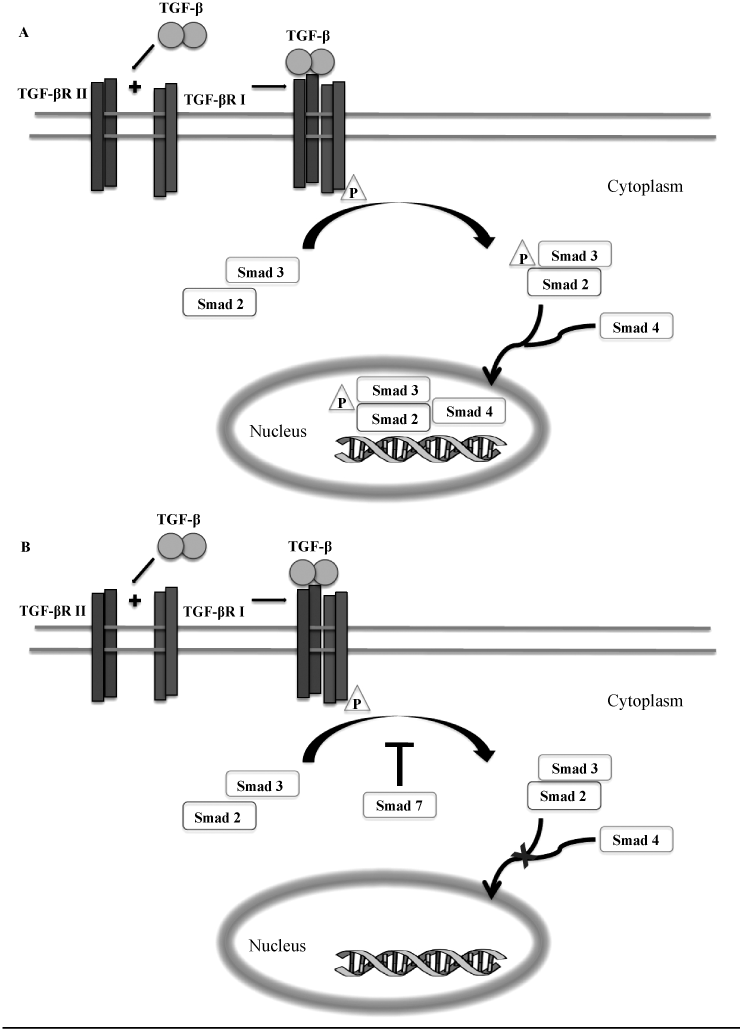
 |
| Figure 1: Schematic illustration showing the TGF-β1-associated Smad pathway in normal (A) and inflamed (B) intestine. (A) Physiologically, active TGF-β1 binds to TGF-β receptor subunit II (RII) and promotes phosphorylation (p) and activation of TGF-β receptor subunit I (RI), thus leading to phosphorylation of Smad2/3. Phosphorylated Smad2/3 interacts with Smad4 and the complex translocates to the nucleus, where it controls the transcriptional activity of multiple genes, including those encoding for inflammatory molecules. In the gut of patients with inflammatory bowel diseases, mucosal cells express elevated levels of Smad7, an intracellular protein that binds to TGF-β RII thereby preventing phosphorylation of Smad2/3, with the downstream effect of suppressing TGF-β1-driven counter-regulatory properties. |